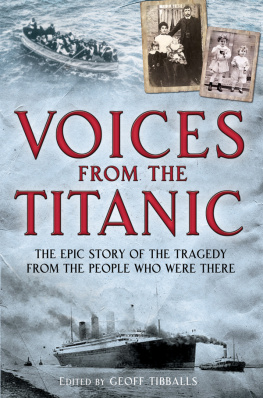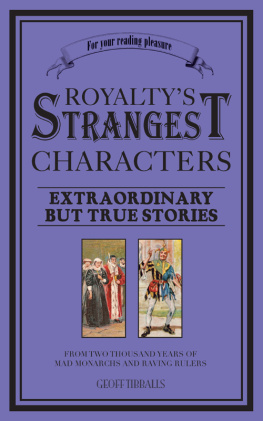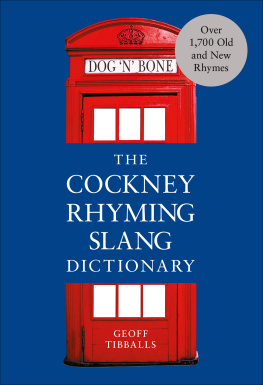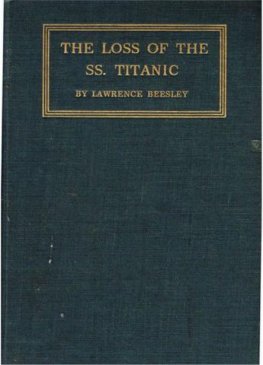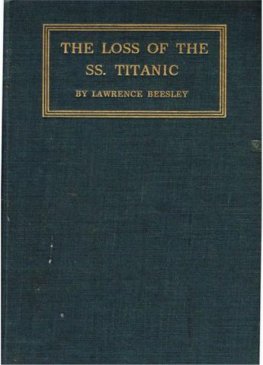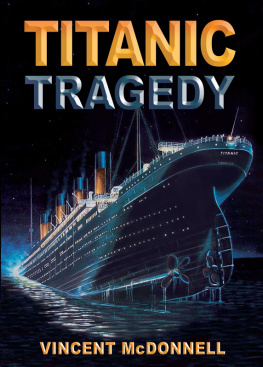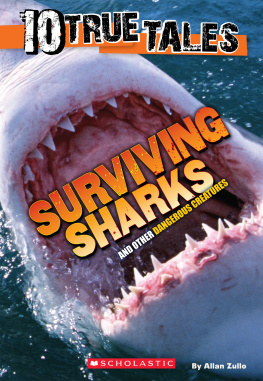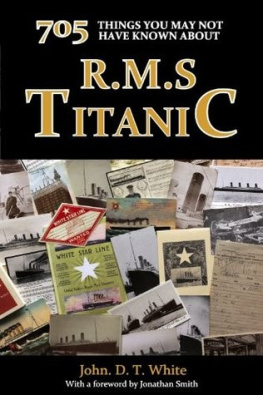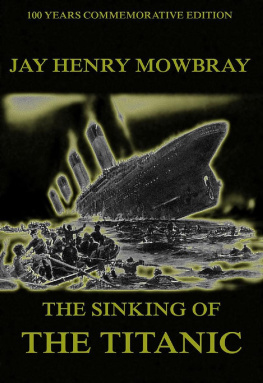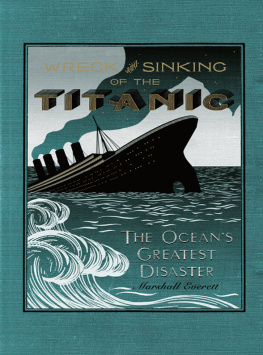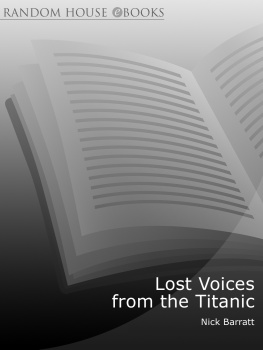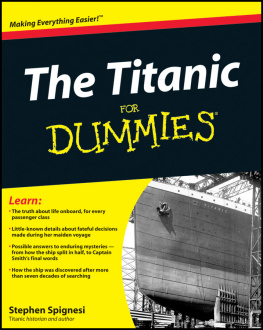Geoff Tibballs worked in television for fifteen years before leaving in 1989 to become a full-time author. He was since had over a hundred books published on a wide variety of topics, including social history, sport, television and humour. His 1997 book, Titanic, written to coincide with the Hollywood blockbuster, was a best-seller. His titles for Constable & Robinson have included Business Blunders, Legal Blunders and The Mammoth Book of Jokes.
For Carol, Nicki and Lindsey
Copyright 2012 by Geoff Tibballs
All Rights Reserved. No part of this book may be reproduced in any manner without the express written consent of the publisher, except in the case of brief excerpts in critical reviews or articles.
All inquiries should be addressed to Skyhorse Publishing, 307 West 36th Street, 11th Floor, New York, NY 10018.
First published in the UK as The Mammoth Book of How it Happened: Titanic, by Robinson, an imprint of Constable & Robinson Ltd, 2002
Skyhorse Publishing books may be purchased in bulk at special discounts for sales promotion, corporate gifts, fund-raising, or educational purposes.
Special editions can also be created to specifications. For details, contact the Special Sales Department, Skyhorse Publishing, 307 West 36th Street, 11th Floor, New York, NY 10018 or .
Skyhorse and Skyhorse Publishing are registered trademarks of Skyhorse Publishing, Inc. , a Delaware corporation.
www.skyhorsepublishing.com
10 9 8 7 6 5 4 3 2 1
Library of Congress Cataloging-in-Publication Data is available on file.
ISBN: 978-1-61608-605-3
Printed in the United Kingdom
INTRODUCTION
The morning of Wednesday, 10 April 1912, dawned bright and breezy in Southampton, but the cool spring air was heavy with anticipation. For in a few hours time, the biggest ship in the world, the White Star liner Titanic, was due to set off on her maiden voyage, bound for New York with a passenger list which read like a Whos Who of early twentieth-century society. The great and the good had been captivated by accounts of the ships superlative accommodation, which likened it to a floating hotel. For those who could afford prices of between 400 and 870 for a one-way ticket, a first-class suite aboard the Titanic was the only way to cross the Atlantic. The inaugural voyage of this magnificent vessel was expected to be an occasion that would live in the memory for years to come. And so it proved.
The Titanic was born out of entrepreneurial greed a ruthless desire by shipping magnates to cash in on the lucrative transatlantic routes and to eliminate all competition in the process. The chosen method was to build bigger and faster ships than ever before. The principal protagonists were two British companies, the White Star Line and Cunard, the latter having been responsible for establishing the first transatlantic steamship service via its vessel Britannia in 1840. Over the next fifty years trade between the United States and Britain increased sevenfold, not only in terms of tobacco, cotton and wheat, but also in human cargo. Growing numbers of Europeans saw America as the promised land and opted to start a new life there, and, since the only means of travel was by ship, passenger demand rose dramatically. Founded in 1850, when it specialized in carrying emigrants from Britain to Australia, the White Star Line steadily began to challenge Cunards monopoly on the transatlantic routes and by 1875 had produced steamers capable of travelling at 16 knots, reducing the journey time to less than seven and a half days. All White Star vessels were built at the Harland & Wolff shipyard in Belfast.
Sensing a business opportunity, American financier John Pierpont Morgan decided that he, too, wanted a slice of the action. His company, International Mercantile Marine, bought Inman Lines of Liverpool and started a fierce price war, offering third-class transatlantic passages for as little as 2. He then tried to buy Cunard, but was prevented from doing so by the British government. So he turned his attention to White Star. The chairman of Harland & Wolff, Lord Pirrie, thought that the best way to protect his yards interests was to team up with Morgan and in 1902 he helped the American acquire White Star, which thus became a subsidiary of International Mercantile Marine. Joseph Bruce Ismay remained as chairman of White Star and all White Star ships continued to have British crews and to fly the British flag. But the real power lay on the other side of the Atlantic.
In 1907, backed by sizeable subsidies from the British government, Cunard launched the Lusitania and the Mauretania, both of which were capable of an average speed of 26 knots. At the time White Stars fastest ship was the Teutonic, at 21 knots. In order to compete with the Cunarders, White Star laid plans for the construction of a fleet of three huge liners, larger than anything which had gone before, and which would offer the last word in passenger comfort. To reflect their size and class, they were to be called Olympic, Titanic and Gigantic. The design team was led by Lord Pirries brother-in-law Alexander Carlisle until his retirement in 1910, when he was succeeded by another of Pirries relatives, nephew Thomas Andrews. J. Bruce Ismay approved the design on 29 July 1908 and a contract was signed for the building of the first two ships. Work on keel number 400 the Olympic began at Harland & Wolff in December 1908; keel number 401 the Titanic was laid at the end of the following March.
The two sister ships were almost identical, although the Titanic was marginally longer at 882 ft 9 in. by virtue of the addition of an enclosed promenade for first-class passengers. Each ship boasted ten principal decks, a maximum speed of between 24 and 25 knots, a regular service speed of 21 knots and what was thought to be the latest in safety features. These included the installation of a Marconi wireless system for telegraphing messages at a range of up to 1,500 miles and a network of supposedly water-tight compartments. The Titanic was divided into sixteen such compartments, formed by fifteen watertight bulkheads running across the hull. Six of these reached up to D deck, eight went up to E deck, but the other rose only as far as F deck. Each bulkhead was equipped with automatic watertight doors, held in the open position by a clutch which could be released instantly by means of an electric switch controlled from the captains bridge. In a special issue published in the summer of 1911 The Shipbuilder magazine concluded: In the event of an accident, or at any time when it may be considered advisable, the captain can, by simply moving an electric switch, instantly close the doors throughout, practically making the vessel unsinkable.
In concentrating their defences on transverse bulkheads, the Titanics designers had taken into account the experience of the Guion Lines Arizona, which, in 1879, had ploughed head-on into a 60-ft-high iceberg near the Newfoundland Grand Banks. Although her bows were wrecked, the Arizona remained afloat and was able to make it safely back to St Johns. But the transverse bulkheads, while effective against a blow to the bows, failed to protect the Titanic from a side-on collision. The designers claimed that the Titanic would stay afloat even if two of the watertight compartments somehow became flooded but, by not extending the bulkheads sufficiently high within the interior of the ship, they left it vulnerable to a sudden inrush of water, which, as it transpired, would flood one compartment, surge over the top and fill the adjoining one.
An even more alarming oversight and one which would take up countless newspaper column inches was the issue of lifeboat provision. The outdated British Board of Trade regulations had not been amended since 1894, when the largest vessel afloat was the 12,950-ton
Next page
